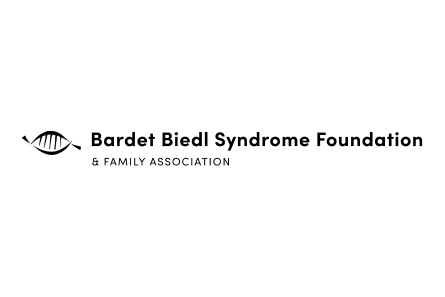Bardet Biedl Syndrome Foundation
Cycle 3
Bardet Biedl Syndrome is a rare genetic disorder with highly variable symptoms which may include retinal degeneration, obesity, reduced kidney function, polydactyly (extra digits of the hands or feet) among many other features. While there are more than 20 genes associated with BBS, the underlying cause regardless of gene is malfunction of primary cilia, a key component of cellular communication. BBS is thus categorized as a ciliopathy, or a disease of the cilia.
Last updated 04/30/2025
Clinical
Disease Class
Ciliopathies
Developmental anomalies during embryogenesis
Endocrine diseases
Gastroenterological diseases
Genetic diseases
Gynecological and obstetric diseases
Hepatic diseases
Neurological diseases
Odontological diseases
Ophthalmic diseases
Renal diseases
Urogenital diseases
Body Systems
Digestive
Endocrine
Integumentary / Exocrine
Metabolic
Muscular / Skeletal
Nervous / Sensory
Renal / Urinary / Excretory
Reproductive
Organs
Bladder
Bones
Brain
Ears
Eyes
Fallopian tubes
Heart
Intestines
Kidneys
Liver
Mouth / teeth
Muscles
Nerves
Nose
Ovaries
Penis
Scrotum
Skin
Testes
Uterus
Known Genetic Link
Yes, there are both genes that cause the condition and genetic factors that contribute
causative_genes
ARL6
BBS1
BBS10
BBS12
BBS2
BBS4
BBS5
BBS7
BBS9
c8orf37
CEP19
CEP290
IFT172
IFT27
LZTFL1
MKKS/BBS6
MKS1
NPHP1
SCAPER
SCLT1
SDCCAG8
TRIM32
TTC21B
TTC8
WDPCP
contributory_genes
None specified / unknown
Type of Inheritance
Autosomal recessive
Newborn Screening
Yes, for some genes
Disease Mechanism(s)
Cilia dysfunction
Proteome disorder
Age of Onset
Prebirth
Average Age at Diagnosis
Middle childhood (6-11)
Life Expectancy
Adulthood (age 18-64)
Affected Sex(es)
Female
Intersex
Male
National Prevalence
1001-10000
Global Prevalence
10000+
National Incidence
Less than 10
Global Incidence
Less than 10
Populations and/or ancestry with higher prevalence
Areas with high consanguinity including: Arabian peninsula, Newfoundland, Puerto Rico, South Asia
Symptoms / Phenotypes
abnormal retinal morphology
abnormality of the dentition
abnormality of the genital system
abnormality of the kidney
anosmia
autism
developmental delay
hepatic fibrosis
hydrometrocolpos
hyperechogenic kidneys
hypogonadism
Legg-Calvé-Perthes disease
obesity
polydactyly
Retinal dystrophy
situs inversus
Biomarkers
None
Existing Therapies
FDA-Approved for Symptom Relief
Off-Label Drug Use
Organizational & Research
Cell Lines
None
Disease Model
Mouse
Disease Model, Involvement
Funded
Disease Model, share
Unsure
Clinical Trial Role
Recruitment and outreach, patients
Results dissemination, publication
Study material design, review (not protocol)
Biobank, Institution
None
Center of Excellence, Institution
Mayo Clinic
Center of Excellence, Involvement
Consulted
Registry
Yes, we have a registry that we created
Data Collected, Registry
Clinical data
Electronic health records/electronic medical records
Genetic data
Imaging data
Longitudinal natural history data
Medication usage
Patient contact info
Patient-reported data
Data Entered by, Registry
Other
Platform, Registry
REDCap
Natural History Study
Yes, we have collaborated on a natural history study
Data Collected, Natural History Study
Clinical endpoints (outcomes)
Electronic health records/electronic medical records
Genetic data
Imaging data
Medication usage
Patient-reported outcomes
Retrospective data
Platform, Natural History Study
REDCap
FDA Patient Listening Session
No
FDA Patient-Focused Drug Development (PFDD) Program
No
ICD Codes
Yes, we have an ICD-10 code specific to our exact disease
Diagnostic Guidelines
Yes, we have guidance available on our website
Yes, we have published formal guidelines in a peer-reviewed journal
Science Advisory Board Policies
Does not have an SAB
Research Network Policies
Does not have a CRN
Research Roadmap
We don't have a Research Roadmap
International Chapters
North America
International Partners
Europe
